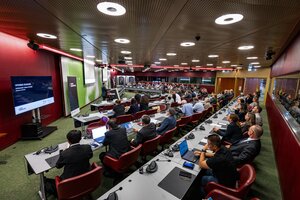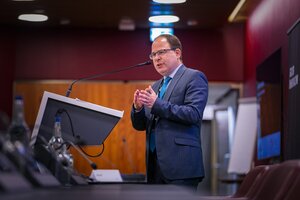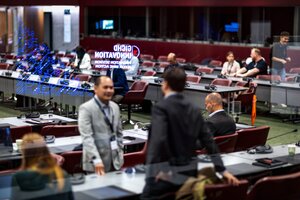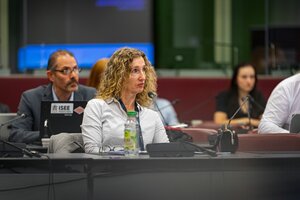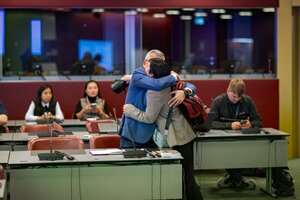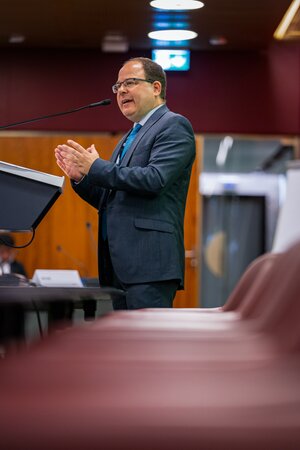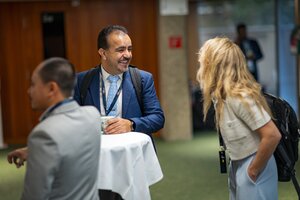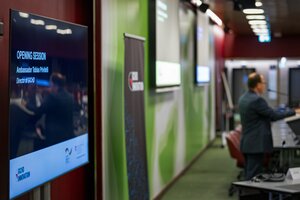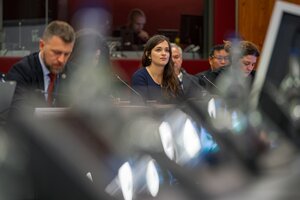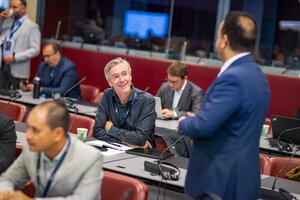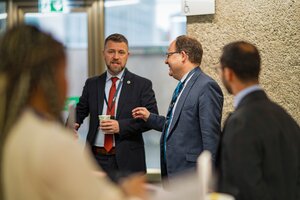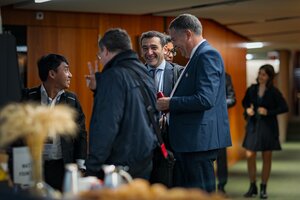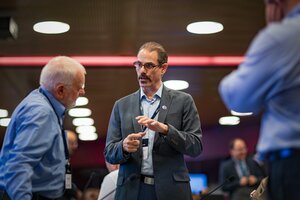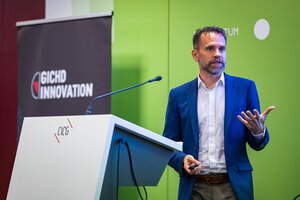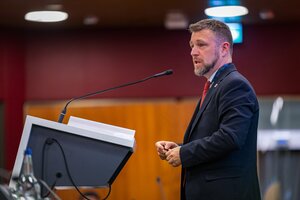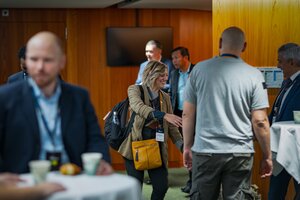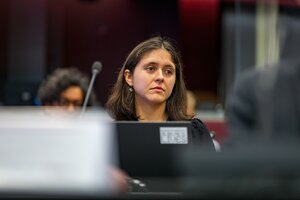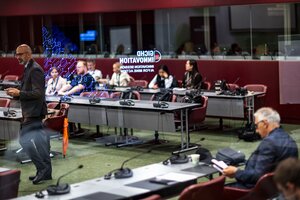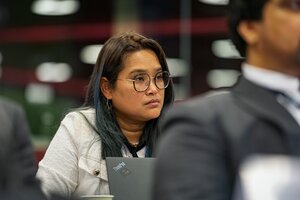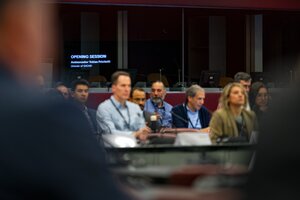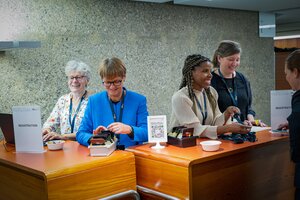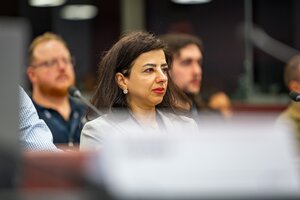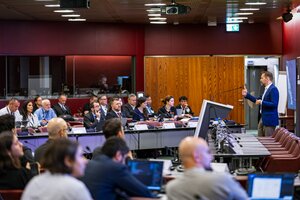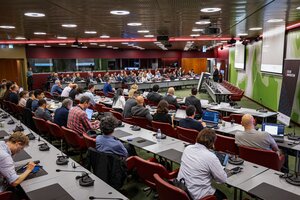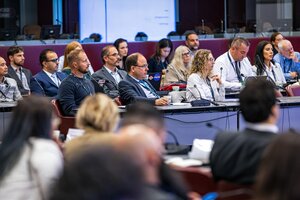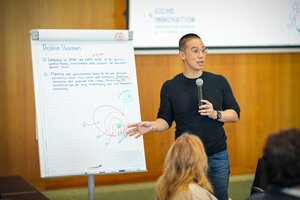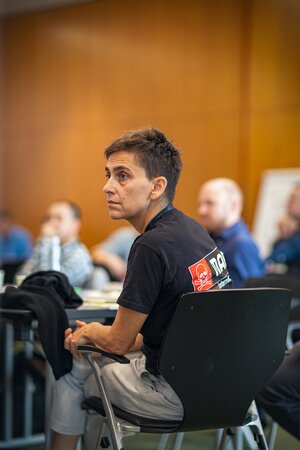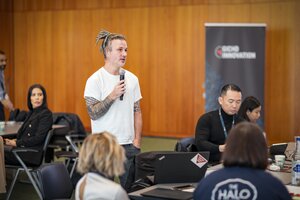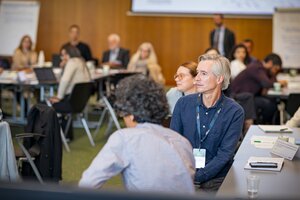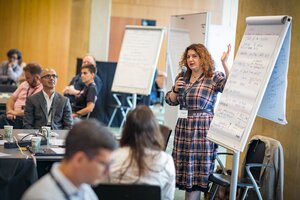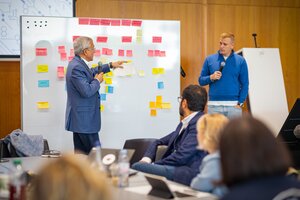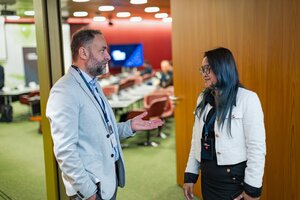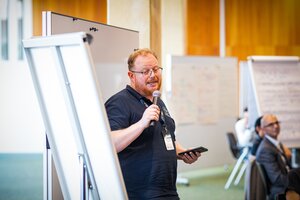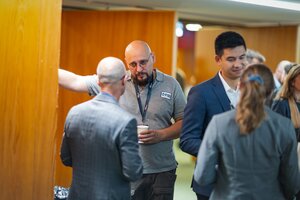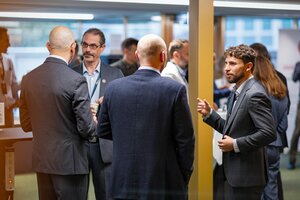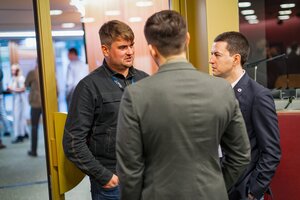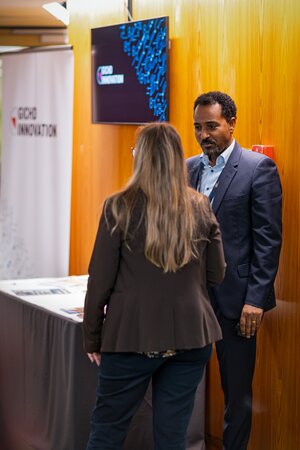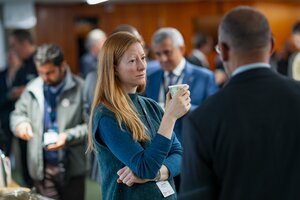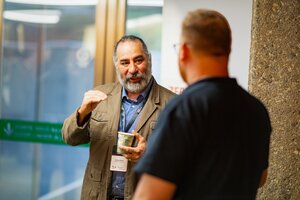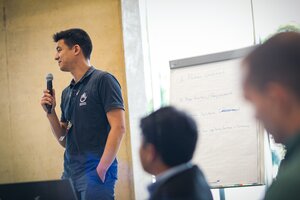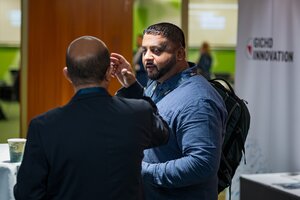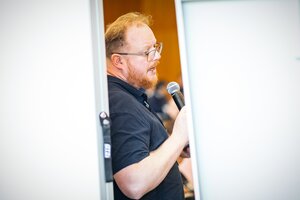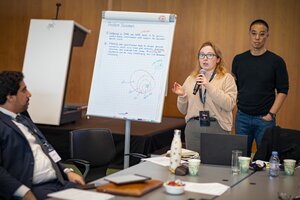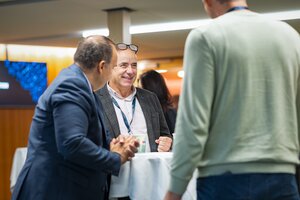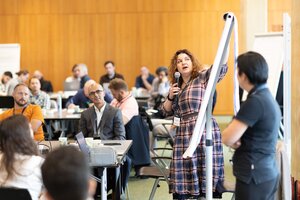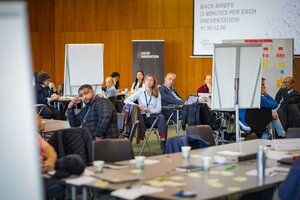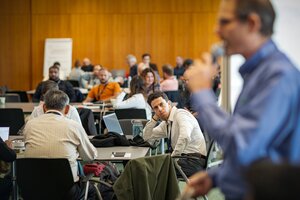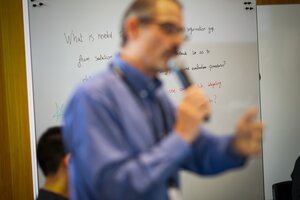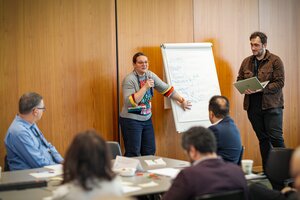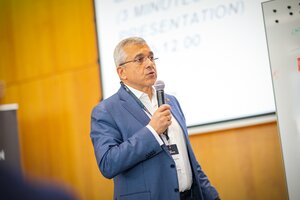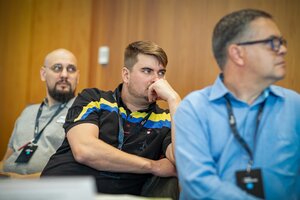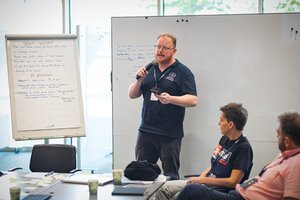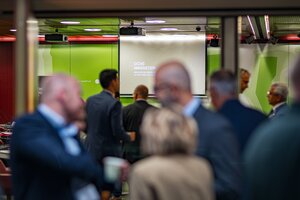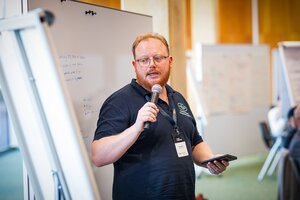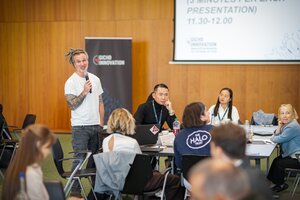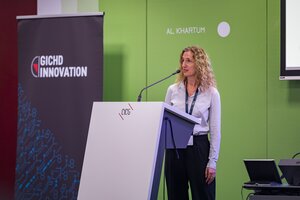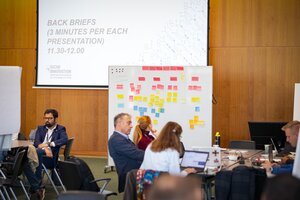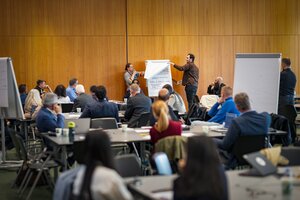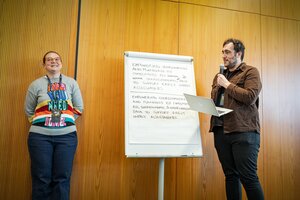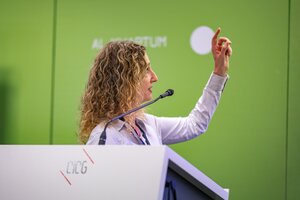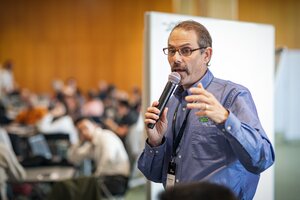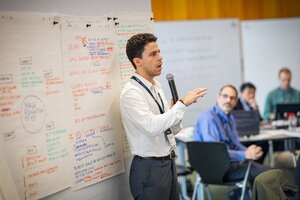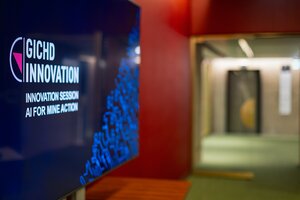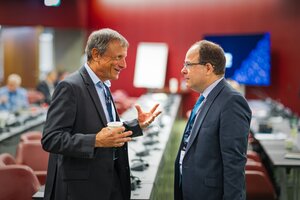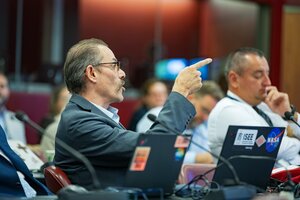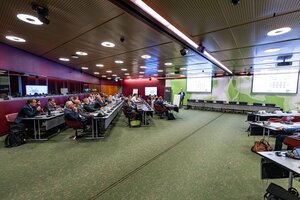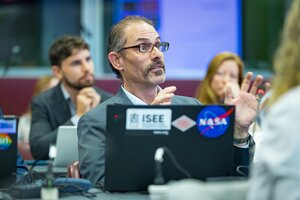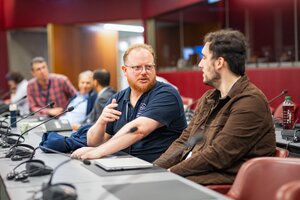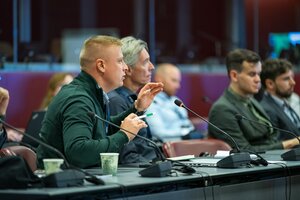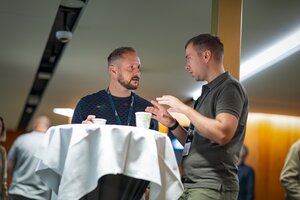Welcome to the webpage for the 2024 GICHD Innovation Session on AI for Mine Action, held from October 1–3 at the International Conference Center in Geneva. This event brought together 90 experts from both the mine action and AI communities to explore how AI technologies can be applied to improve the efficiency and effectiveness of mine action programs. Through collaborative working sessions, participants identified needs-based challenges and developed innovative AI-driven project ideas.
On this page, you will find downloadable presentations used during the event, designed to help both mine action and AI professionals build a stronger shared understanding of the interplay between AI and mine action. Additionally, video recordings of the presentations are available for viewing. These resources aim to facilitate ongoing dialogue and knowledge-sharing between the AI and mine action communities.
Opening remarks by Amb. Tobias Privitelli, Director of the GICHD
Opening remarks by Amb. Tobias Privitelli at the Innovation Session on AI for Mine Action, emphasizing the transformative potential of artificial intelligence in mine action, the importance of partnerships, and the launch of GICHD’s Mine Action Innovation Hub to drive evidence-based, sustainable solutions for global challenges. The event took place from 1-3 October 2024 in Geneva, Switzerland.
Presentations and Videos
Keynote Speech: Michael Tjalve (Humanitarian AI Advisory)
Keynote speech by Mr. Michael Tjalve, emphasizing the potential of AI in mine action while underscoring the importance of caution, ethical responsibility, and strategic oversight. The presentation explored distinctions between AI computational methods, applications in humanitarian and mine action, and practical considerations for responsible implementation.
Introduction to Mine Action: Greta Zeender (GICHD)
At the Innovation Session on AI for Mine Action, Ms. Greta Zeender, Head of External Relations and Policy at GICHD provides and engaging overview by offering non-experts a comprehensive introduction to the mine action sector.
Ethics of AI: Alexander Kriebitz (Ludwig Maximilians University of Munich)
Session by Dr. Alexander Kriebitz from Ludwig-Maximilians-Universität München on 'Artificial Intelligence, Ethics, and Human Rights,' exploring ethical challenges and proposing strategies to mitigate global risks associated with AI in humanitarian contexts.
Perspectives on AI and Mine Action: Sulaiman Mukahhal (GICHD)
A session by Mr. Sulaiman Mukahhal, during GICHD Innovation Session on AI for Mine Action. He explores the evolution of AI technologies in mine action, sharing insights from recent research, and strategies to address current challenges while shaping the future of the field. The event took place from 1-3 October 2024 in Geneva, Switzerland.
The Land Release Process: Angela De Santis (Fondation Suisse de Déminage)
A session by Ms. Angela De Santis, Deputy Head of Operations at FSD, at our GICHD Innovation Session on AI for Mine Action. She explains land release operations with a focus on key concepts and best practices, while also briefly addressing operational efficiency and liability considerations.
Information Management in Mine Action: Lina Castillo (GICHD)
Machine Learning & Neural Networks: Rami Alouta (Esri)
Rami Alouta, Senior Solutions Engineer at Esri presents a session showcasing how GeoAI, powered by machine learning and neural networks, can enhance geospatial analysis in mine action. The presentation covered key components of geospatial AI, AI integration within ArcGIS, and the use of pretrained models and deep learning workflows, making these powerful tools accessible for both GIS analysts and data scientists.
Generative AI: Ahmed Al Hammadi (Technology Innovation Institute)
Mr. Ahmed Al Qayed Al Hammadi explores the evolution of large language models (LLMs) from their early foundations to current applications, and talks about how they can enhance decision-making and knowledge management within mine action, showcasing their transformative potential.
Projects
The Session culminated with the presentation of project ideas and discussions to refine them, fostering collaboration, and identifying the most actionable, groundbreaking, and impactful projects.
The nine project ideas emerging from the event and described in this report were:
Most Actionable and Groundbreaking: Reference database for automated image recognition of explosive ordnance
Recognized as the Most Actionable and Groundbreaking Project, this initiative addresses the challenges of scaling automated image recognition for explosive ordnance. It proposes a global 3D reference database integrating textured models and field imagery to support advanced recognition applications.
Most Impactful: Early Impact Analysis Tool
Awarded as the Most Impactful Project, this initiative enhances early impact assessments in mine action through an innovative web application. By integrating contamination, socio-economic, and environmental data, the platform generates heat maps and impact scores to guide evidence-based prioritization and resource allocation.
Data analytics and interrogation of information management systems
This project leverages AI-driven data interrogation models to address challenges in analyzing diverse datasets collected by non-technical survey teams. By integrating natural language processing, pattern recognition, and dynamic visualizations, the initiative enhances data analysis, filling information gaps to support accurate decision-making.
Generative AI supporting organizational processes
This project proposes a fine-tuned large language model for mine action, enhancing multilingual data analysis and improving the efficiency of documentation and reporting. Trained on high-quality datasets and refined through expert feedback, it supports tasks such as drafting standards and donor reporting.
Impact of AI on community engagement within EORE
This project explores AI-assisted tools to enhance digital explosive ordnance risk education, focusing on tailored content and 24/7 chatbot deployment for remote learning. By improving pre- and post-intervention assessments, it tackles challenges like accessibility, quality control, and complementarity with face-to-face methods.
IM systems, data integration and priority setting
This project proposes an AI-assisted prioritization system that integrates diverse datasets and standardizes priority-setting criteria for mine action. By performing sensitivity analysis and recommending priorities, it enables transparent, evidence-based decision-making for demining activities and resource allocation.
Robotics and autonomous mechanical systems
This project develops robotic and autonomous systems to improve safety in complex environments like urban areas, forests, and debris-filled spaces. By integrating machine learning and sensor fusion, it addresses challenges in terrain navigation, mine detection, and cost-effectiveness for mechanical demining and rubble removal.
Satellite imagery processing and analysis
This project creates a technical guide for identifying indirect evidence of contamination using satellite imagery, improving the efficiency and reliability of non-technical surveys. Supported by AI-driven automation and refined through case studies, it aims to integrate clear methodologies and workflows into national mine action standards.
UAV-deployed sensor data fusion and analysis
This project aims to optimize UAV-deployed sensor data in mine action by creating a curated library with ground truth and multimodal data. It bridges communication and information gaps between solution developers, operators, and national authorities, ensuring consistent validation, standardized testing, and scalable solutions.


